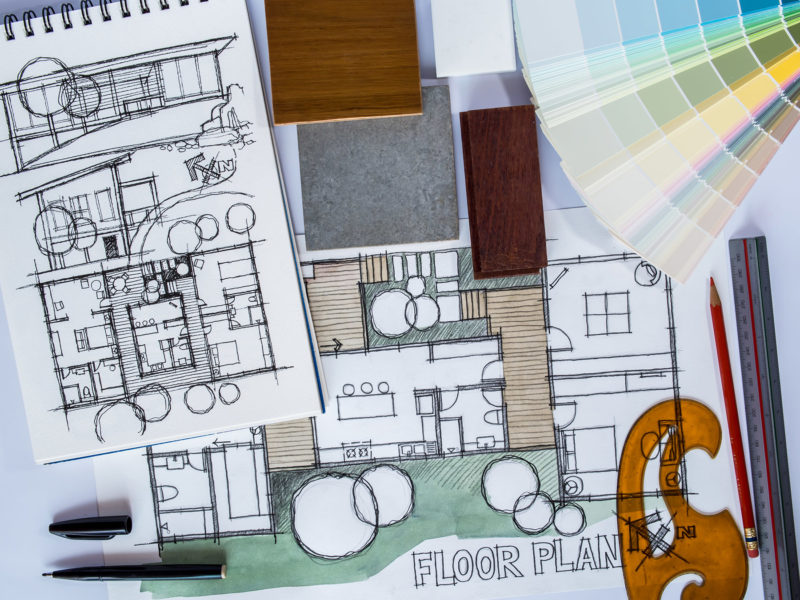KEY TAKEAWAYS
Safety, Health, and Well-Being Interior design is the planning, design and construction of an interior space that improves human safety, health, and well-being.
Save Time and Money Integrating an interior designer early in the design process can save time and money.
Combine Art and Science Interior designers combine art and science to create sustainable, aesthetically pleasing, and functional interior solutions.
Complete project teams include Interior Design throughout the process – from kick-off through occupancy.
Interior Design is the art and science of creative, technical, sustainable, and functional interior solutions. It integrates with the architecture of a space, creating inspiring places that connect people and positively impacts their well-being, safety, and health. Therefore, including interior designers in early collaboration with architects, engineers, and landscape architects is critical to a project’s success.
Gather Data
Early in the process, Interior Designers will ask specific questions to understand the function of a space and the wants and needs of the users occupying it. These questions inform a complete and accurate building space analysis. Some detailed questions may include:
What is the purpose of the space?
How many people occupy the space?
What are the employee’s functions within the space?
How do people move through the space?
What’s your maintenance program?
This information is coordinated with engineering, circulation patterns, equipment placement and furniture needs. The answers define how people use the space, traffic patterns, room material maintenance, power and systems, and specific finishes for function and aesthetics. Questions relating to the design’s aesthetics help determine the overall interior environment including finishes, furnishings, lighting, volume of space, the amount and size of windows, and relationship to the outdoors.
Data gathering isn’t solely function focused. It’s also about understanding the client. How do they do business? What’s their mission and vision? What’s their brand identity? Interior Designers acquire this knowledge early and determine with the client how it will translate to the interior of the building. Gathering this type of data should take place during the early stage of the project.
Plan Early
Interior Designers layout the space with architects and structural engineers to create a floor plan. Design elements and equipment may not be fully developed but determining their locations and size within a plan’s footprint will help with preliminary budget and documentation. An interior design statement is created, and inspirational images and sketches are collected to identify and understand a projects’ design goals. This information helps to keep all players − including the client − on the same page. Early project organization saves the building owner time and money.
Protect Safety
When space planning, Interior Designers do not impact structural, load bearing construction features. They identify non-loadbearing walls, doors, and/or interior windows that need to be designed, removed, or redesigned. Changes to walls, doors, and the built environment impacts occupancy and safety which can affect building code and accessibility requirements. Fire code compliance requires the selection of appropriate materials on floors, walls, ceilings, and furniture. Interior Designers find creative solutions that are safe and accessible.
“As a developer, we’re spending millions on a project. We hire an Interior Designer as part of the project team to make sure the needs and wants of our tenants are met and our project remains competitive in the market.”
– Excelsior Communities
Improve Health
Selecting products for a building’s interior and understanding its impact from a composition, durability, and safety standpoint is a critical component of design. For example, while flooring should be easy to maintain, it can also include specifications that reduces allergens. When selecting lighting, they set a mood or mindset with proper color temperature and illumination. While Interior Designers may not all be certified in a particular building rating system, they do have access and knowledge to create healthier buildings. For example, they select ergonomic furniture that increases healthy behaviors.
Enhance Well-Being
Every project has its own requirements, but ultimately design decisions should lead to the end-user’s well-being. Sometimes that means providing a sense of control for occupants with the ability to control individual lighting, thermal comfort, or navigating a space without assistance. Providing an interior connection to nature through plantings, exterior views, colors and textures inspired by nature also improves health and well-being. Interior Design can improve social connections for users by utilizing transparent glazing, or rearranging furniture and walls. Color also affects well-being by creating specific moods, for example, certain hues of blue can calm occupants.
Summary
Collaboration with Interior Designers from project kickoff through occupancy is a promising step toward a cohesive and well-planned project.

